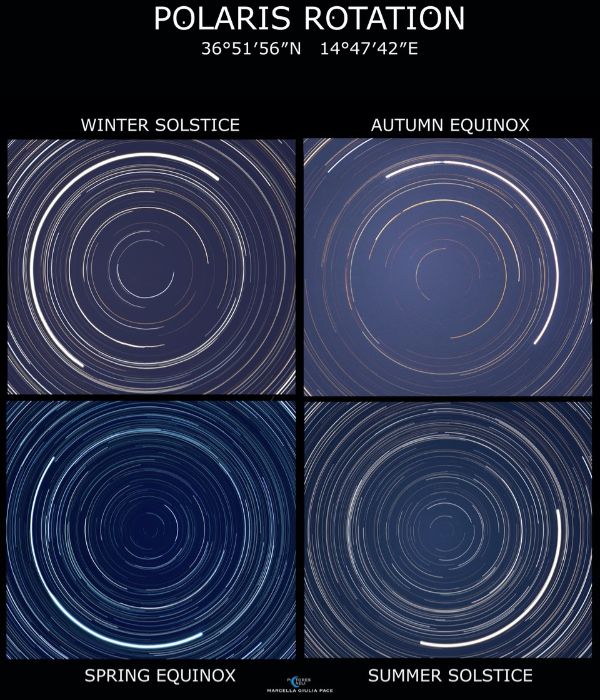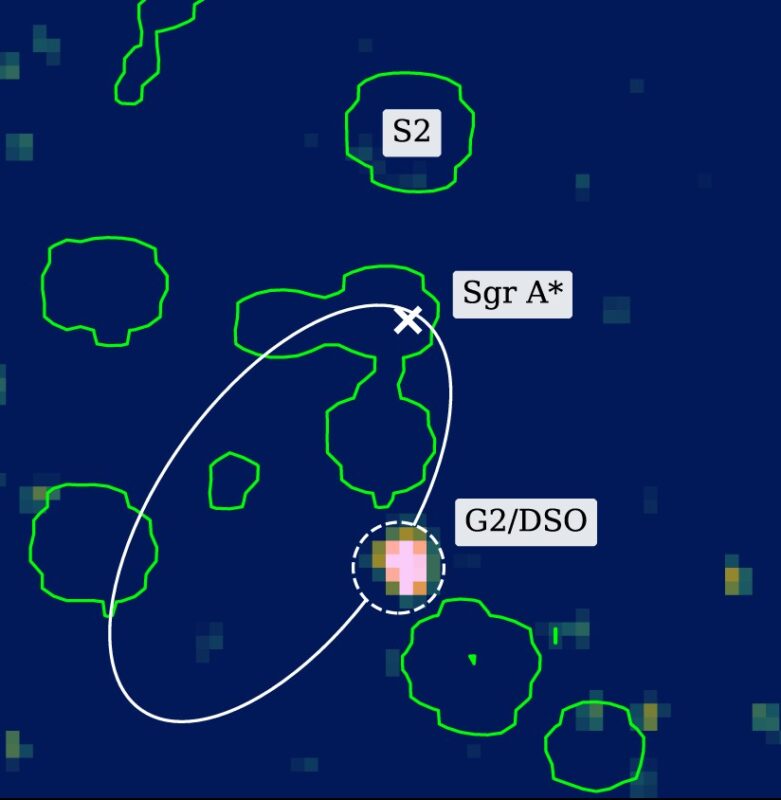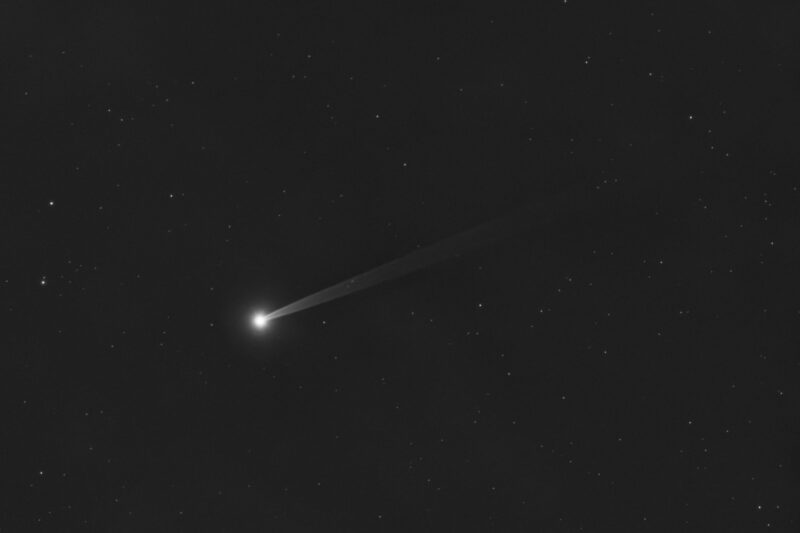Now Reading: Does the North Star ever move in the sky?
-
01
Does the North Star ever move in the sky?
Does the North Star ever move in the sky?


The North Star, aka Polaris
The North Star, also known as Polaris, appears to stay fixed in our northern sky. It marks the location of the sky’s north pole, or the north celestial pole, the point around which the whole northern sky – full of stars – turns. That’s why you can always use Polaris to find the direction north.
Even though the North Star doesn’t appear to move, it does move. The North Star is a symbol for constancy. But, a video of it overnight, reveals that it makes its own little circle around the sky’s north pole every day. That’s because the North Star is offset a little – by about 0.65 degrees – from celestial north. So, Polaris makes a circle that’s 1.3 degrees in diameter each day. When it’s closest to the celestial pole in about 100 years, at a distance of only 0.45 degrees, it’ll make a daily circle of only 0.90 degrees.
Where does this movement – or in Polaris’ case, lack of movement – come from? It comes from Earth’s spin. Earth spins under the sky once a day, and our spin causes the sun in the daytime – and the stars at night – to rise in the east and set in the west. But the North Star is a special case. Because it lies almost exactly above Earth’s northern axis, it’s like the hub of a wheel. It doesn’t rise or set. Instead, it appears to stay put in the northern sky.
How high in your sky?
The North Star not only points toward the north, but its height in the northern sky also matches your latitude on earth. If you are sailing the Caribbean at 16° north latitude, the North Star will be about 16° high in your sky. If you are sailing around Nova Scotia, at 44° north latitude, then the North Star will be about 44° high in your northern sky. Each degree north or south equals 69 miles (111 km), so traveling 690 miles north or south will change your latitude, and the North Star’s elevation, by 10 degrees.
Read more: Polaris is the North Star

Taking turns as the North Star
A motion of Earth called precession causes our axis to trace out an imaginary circle on the celestial sphere every 26,000 years. Thousands of years ago, when the pyramids were rising from the sands of ancient Egypt, the North Star was an inconspicuous star called Thuban in the constellation Draco the Dragon. Twelve thousand years from now, the blue-white star Vega in the constellation Lyra the Harp will be a much brighter North Star than our current Polaris.
Polaris could be a name for any North Star. Our current Polaris used to be called Phoenice. It is the 49th brightest star in the sky. It is not known for its brightness, but for its unique position in the sky.

Proper motion
By the way, Polaris – like all stars – has more than one kind of motion. The stars we see in our night sky are all members of our Milky Way galaxy. All of these stars are moving through space, but they’re so far away we can’t easily see them move relative to each other. That’s why the stars appear fixed relative to each other. And it’s why, for the most part, we see the same constellations as our ancestors.
But over time, this movement, called proper motion rearranges the patterns of stars we see in our sky. For Polaris, that movement is small, about 46 arcseconds in 1,000 years. That is about 1/40th of the diameter of the full moon as seen from Earth. So when you’re talking about stars moving or staying fixed, remember … they are all moving through the vastness of space. It’s just the relatively short time of a human lifespan that prevents us from seeing this grand motion.
Enjoying EarthSky? Sign up for our free daily newsletter today!
Bottom line: The North Star is a symbol for constancy. But a video – or a star trails image – taken of it overnight reveals that it makes its own little circle around the sky’s north pole every day.
Polaris is the present-day North Star of Earth
Use the Big Dipper to find Polaris, the North Star
The post Does the North Star ever move in the sky? first appeared on EarthSky.
Stay Informed With the Latest & Most Important News
Previous Post
Next Post
-
 012024 in Review: Highlights from NASA in Silicon Valley
012024 in Review: Highlights from NASA in Silicon Valley -
 02Panasonic Leica Summilux DG 15mm f/1.7 ASPH review
02Panasonic Leica Summilux DG 15mm f/1.7 ASPH review -
 03How New NASA, India Earth Satellite NISAR Will See Earth
03How New NASA, India Earth Satellite NISAR Will See Earth -
 04And Thus Begins A New Year For Life On Earth
04And Thus Begins A New Year For Life On Earth -
 05Astronomy Activation Ambassadors: A New Era
05Astronomy Activation Ambassadors: A New Era -
06SpaceX launch surge helps set new global launch record in 2024
-
 07From Polymerization-Enabled Folding and Assembly to Chemical Evolution: Key Processes for Emergence of Functional Polymers in the Origin of Life
07From Polymerization-Enabled Folding and Assembly to Chemical Evolution: Key Processes for Emergence of Functional Polymers in the Origin of Life




















